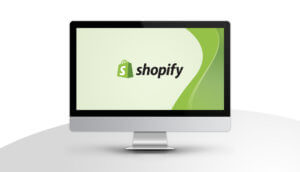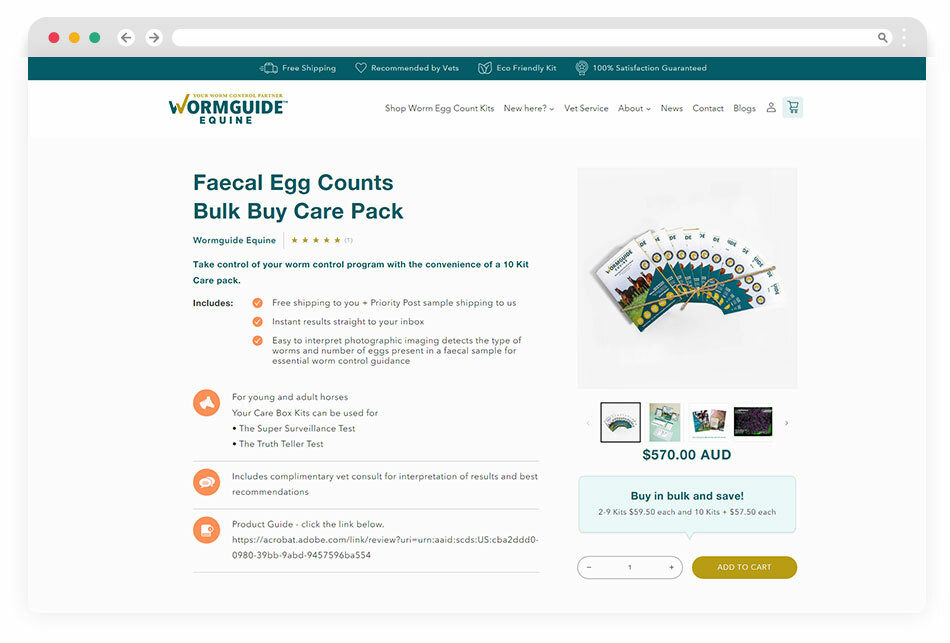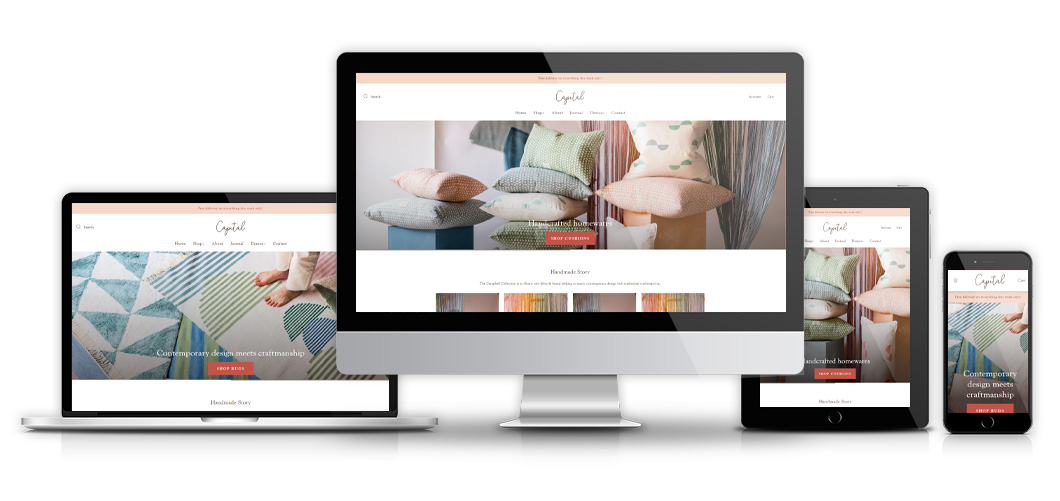I hope you enjoy reading this blog post.
If you want to discuss your website, we're here to help! Talk to Johannah.

Starting a small business? 10 Steps for ecommerce website success
The number of small businesses starting is greater than ever before. The speed and flexibility of technology and software to use in small business is also more varied and more accessible. The combination of flexible technology, SaaS platforms and new business ideas means it’s also faster to get to market with an ecommerce website business. If you are considering starting a small business, we are here to help. The team at Confetti Design have put together the 10 steps for ecommerce website success.
At Confetti Design of the calls or enquiries we get every day, 70% of all enquiries we get are to include an ecommerce website. If you are a start up or an existing small business you need to be able to take payments online.
We have years of online store website development experience and have designed and developing 100’s of new ecommerce websites with large and small catalogues and we wanted to share our knowledge with people starting a small business so starting right is easier. Here listed are 10 of the top factors that you’ll need to consider when starting your small business that includes an ecommerce web design and website development element.
10 steps to start your small business right.
The following are 10 web design and development related steps that will help create a small business online.
1. Why choosing a domain name for your business is important.
1.1 SEO best practices for domain names
Considering the way SEO works is beneficial in the beginning stages of starting a small business, especially one that has an ecommerce element. The goal of a search engine like Google is to provide the most relevant search results to the searcher. The results you will notice when you use a search engine are near where you are located and bring up results that have the phrases you have used in the search.
Knowing your audience is critical. Where are your customers? In Australia you would be most sensible to use a .com.au because that is where your business and customers reside. If you were exporting to New Zealand only you would want to be found there so a .co.nz would be more relevant. This is called ‘the domain extension.
However it is also best practice to buy both the .com.au and .com domain extensions for your business to protect your brand and in case you plan to expand your business globally in the future.
1.2 How to choose your domain name
Now even though we have talked about keywords and SEO you do not need to insert keywords you’re your domain to have your site rank. Instead the best approach is to select a name that represents your business focus, the problem is solves for customers and your brand. There are over 200 factors that affect where a website sits in search engine result. ranks better than another on Google.
Having said all of that if there is an opportunity where a keyword phrase, your business solution and brand collide that is a great name to select.
To summarise, you need to get a professional and a good domain name for your web design with some of the following qualities.
-
-
- An extension of your market: The domain name should be an extension of your market (.com.au in Australia)
- Describe your business: The domain name is descriptive of the business
- Short and spelling: The domain name should be short and simple to pronounce and spell
- Brandable: The domain is a brandable name, unique with no specific meaning
- Letters: Avoid using hyphens and numbers in your domain name
-
There are many domain name checkers, so while you are generating business names and checking their availability also check if a domain of the same name is available. We wrote about business naming here too.
Whether you are starting up a business or thinking about your current digital marketing, give us a call.
We can help.
2. Who is your small business website targeting?
There are a range of questions we ask when working with a start-up business to determine who the target audience of your product or services are. These questions help determine the design of the site. They can also guide the website tone of voice for the copy. We also want to consider these in light of what will attract your audience and what type of customer experience and packaging is going to resonate.
Some great questions to ask yourself are:
-
- What is the age range for my target audience?
- The location of my target audience located?
- Are they male, female or both?
- Do you know what are the occupations of your target audience?
- In their spare time, what to they do?
- On a typical day, what does it look like?
- Their movements, what are they?
- Where to they go and how do they get there?
We go over this in greater detail about this here. Our Clarity Process also explains the benefit of doing this strategic thinking up front in the planning of your small business website.
3. What platform is best for your small business website?

If your core business model is ecommerce then you have a great choice of platforms; WordPress + WooCommerce for cart function or Shopify; all in one option. These are the two we most recommend. We compare them here.
There are further options such as Big Commerce and Magento but they tend to be quite expensive for people when starting a small businesss.
If you are adding a shopping cart facility onto your small business website then the best option is WordPress with the cart plugin WooCommerce.
4. Consider the customer journey in your small business website design.
4.1 What is a customer journey?
The customer journey is the process in which a customer interacts with your small business or on your ecommerce site that results in them making a purchase.
Prospective customers can gain brand awareness via social media, or through receiving your “thank you for your purchase” email after a placing an order and anywhere in between these steps.
4.2 Why is knowing your customer journey important?
It simply isn’t worth ignoring your customer journey. You make an impression at each step on this path and there is an opportunity to manage expectations or exceed them. It isn’t something you want to assume or predict. A great idea is to test out your planned customer journey by asking your actual prospective or existing customers. Often when you start a business you go to friends and family for feedback. Invariably this is a mistake as they are not always your target audience so their insights can be misleading.
The user experience is tantamount in determining your website flow and design. You don’t need to use fancy software for this, simply take pen to paper and map this out by considering what information is required at each key point of the customer journey.
4.3 How to map a customer journey.
Firstly, we suggest you look at each of your types of prospects and customers.
These will include:
-
-
-
- People new to your brand
- Already followers but not purchasers
- One off buyers
- Consistent buyers
-
-
Secondly, ask each of these audience types a range of questions to learn more about what is important to them and why they purchase or do not purchase products like yours.
Finally you have both an emotional response you wish for and a goal action for them to take.
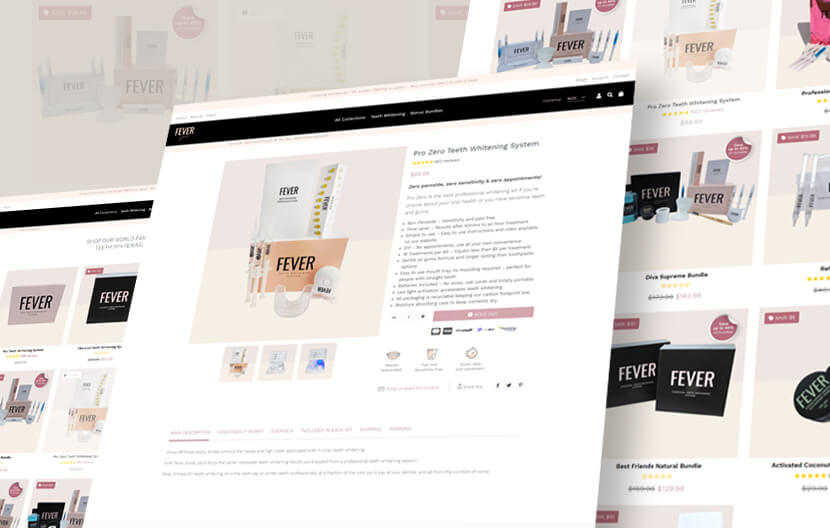
Determine what these are while looking at each of the touch points of your brand for each of your target groups. Put yourself in the shoes of the customer to see if you have a great journey mapped out. Prospects have natural objections, what could you provide to overcome these at each of these stages?
You are starting a small business so this may take some testing and measuring to get it right.
Parts of the journey to consider might include:
-
-
-
- Social
- In person
- On the homepage
- On About page
- On single product pages
- Email confirmations
- Product delivery
- Post delivery communications
-
-
5. Ecommerce SEO – You can’t ignore Search Engine Optimization in your small business website.
 5.1 What is SEO?
5.1 What is SEO?
SEO or Search Engine Optimisation, is the scientific art of making your site get found in higher positions in search engines. Ecommerce SEO is the process of making your online store or products more visible in the search engine results pages (SERPs). When people search for products that you sell, you want to rank as highly as possible so you get more traffic. You can get traffic from paid search, by loading your products into a Google Adwords/ Shopping campaign. Organic SEO is generally a longer proportion but in the long run likely cost you less.
5.2 How to benefit from eCommerce SEO?
Most of the users on search engines like Google or Bing, generally open the first 3 to 5 results on page 1. The profitability of being at the top of the page with a beautiful site is highest. This means that if you get your website on top of the search results, you will have increased traffic and more of a captive audience to sell to.
5.3 Why do I need to consider eCommerce SEO at the beginning of the website design process?
The work of optimizing starts with a strategy to determine what the phrases that give you the best opportunity are and then creating content in line with that strategy. We talk about it more in detail here.
It is really important to think about SEO before you design and build your small business website because it helps determine the following:
-
-
- Navigation
- Site structure
- Pages required
- Page names
- Text to be included in the design
- Topics for articles when you launch and on-going
-
6. Your small business website needs to look great.
Once you have an understanding of your audience, customer journey and site structure you are ready to create the design and content.
Generate good quality content because it matters the most to making a connection with your audience. This is vital when you get all the fabulous traffic from your SEO work that you then need to convert them into a follower or customer. If your content is good and engaging, it will keep a good proportion of the traffic engaged on your website, which will eventually lead to making more sales.
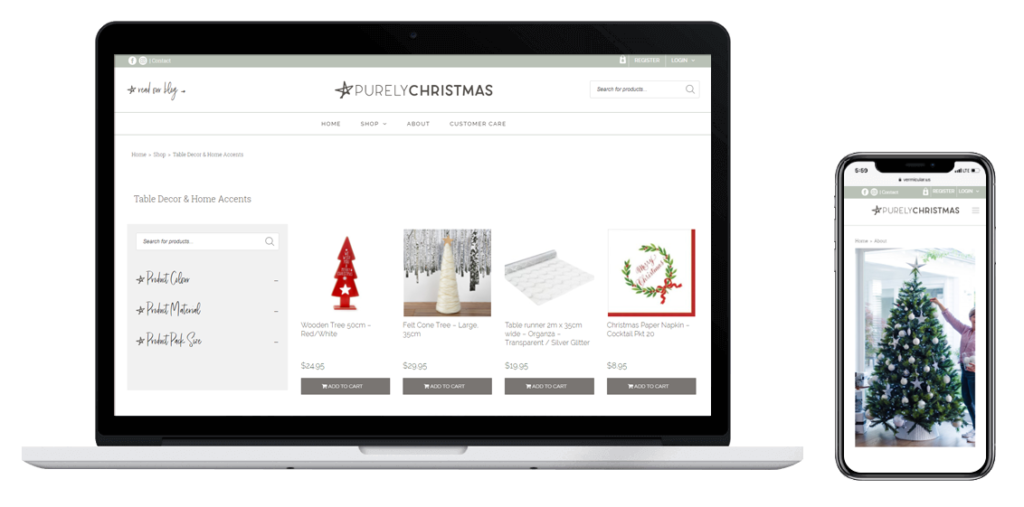 The content will consist of:
The content will consist of:
-
- Branding / logo and iconography
- Photography of products
- Brand and story telling or hero photography
- Video’s for products, product reviews, brand building
- Onboarding emails
- Nurture emails
- Newsletters
Additionally, try to keep content aligned with your brand tone and persona. Consistency is really important to build trust and is very helpful in making a great impression to your visitors.
7. Your small business website speed is important.
The speed of your site is so important. In fact your site needs to load in under 3 seconds.
Here are a few reasons why:
-
-
- Search engines will penalize your site if it slow. All the great work on optimizing your site is effectively lost
- Visitors bounce off to a competitor site, you miss out on possible sales
- Speed affects the customer perception of a business
- hello@
- sales@
- coffeeo@
- love@
- info@
-
8.Set up fast and secure small business website hosting or eCommerce hosting provider.
If you build your ecommerce website in Shopify the platform will look after the hosting and security, as it is an all-in-one platform.
The decision to use WordPress as the CMS for our small business eCommerce website you will need to secure a hosting account that includes an SSL certificate and back-up capability. We recommend a company in Melbourne called VentraIP.
A good guide regarding the speed is to look at reviews of hosting providers. You may have a hosting account that is independent of where you registered your domain. They need to be in the same place.
9.Secure a business email address for your eCommerce business.
We see this time and time again where start-up businesses are wanting to save money by not getting a business email. This should not be where the saving is made. If you are serious about starting your small business, we strongly encourage you to get a business email address. A business email address automatically gives you credibility and legitimacy.
A small business email address can also be a great opportunity to extend your brand. Some examples could be:
-
-
- hello@
- sales@
- help@
- info@
- love@
Confetti Design recommends Richard at In2tech. Not only does he provide phone, support for emails, he also offers general Business IT Support.
-
10. Keep your eCommerce small business website up to date.
A website is not meant to be made once and then left to stagnate. A forgotten website is the equivalent of a bricks and mortar business that has dust on the shelves! The tell-tale signs are blogs without a post for a year and the footer copywrite date is not current. Other giveaways are outdated design and images of the people who no longer work in the business.
We like the analogy of ‘your website is your best sales person’. You keep upskilling your sales team, their performance is tracked and feedback provided to motivate, encourage and get the most out of them. When you take the same approach to your site you will reap the rewards of the investment in time and money.
To select WooCommerce for your platform you will also need to keep the site updated. It is built with plugins that require being updated each week or month. Ignoring this can also leave your small business eCommerce website prone to hacking.
If you choose Shopify for your eCommerce website platform, security and software updates are taken care for you but still keep the content fresh.
Final Thoughts.
Starting a business is a large undertaking and can be overwhelming at times, however the rewards can be huge. Starting well and doing one step at a time will pay off in the long run. In fact one of my very first blogs was on this exact topic.
I, like you started a small business and found if I focused on one step at a time in bite sized portions I felt more in control and positive. Since then we have helped over 400 people in the exact same place as you now. Further to that, we have the same conversation with every person who is starting a small business and this is where our 10 steps are derived.
We have outlined 10 very important steps for business owners starting an eCommerce business. We often want to leap into the pretty stuff first, but the research and strategy stage is most important. We are a small business website design agency in Melbourne and can help you at any of these stages. Reach out if you would like assistance in starting your new eCommerce business.

Johannah Barton
Johannah is founder and owner of Confetti Design, a leading Melbourne Shopify Agency. Her extensive background in fashion, interior design, sales and marketing contributes to the Agencies great ability and reputation. She creates content that helps small businesses navigate the online space helping them to consider their website as a sales tool.
Read more
